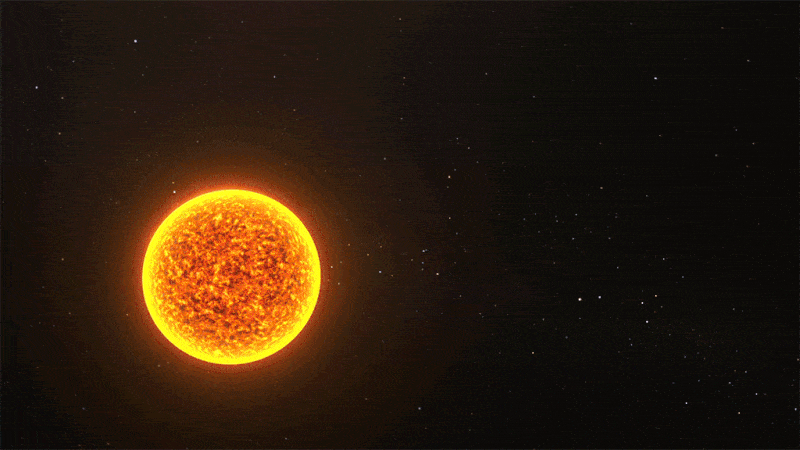
Our sun has been active this week. And its overall activity is increasing as it nears solar maximum, expected for the mid-2020s. But, even at maximum, solar activity is nothing now in contrast to the young sun’s activity during Earth’s formative years. During Earth’s first 100 million years, when the sun was only about 1/3 as bright as it is now, it popped off strong solar eruptions known as superflares about every three to 10 earthly days. Those superflares – powerful explosions on our star, with energies 10 thousand times greater than typical solar flares – occur today only about every 100 years. According to a new study – previewed online by NASA on May 2, 2023 – life might have arisen when solar particles from these events collided with gasses in Earth’s early atmosphere.
And so the sun – our life-giving star, which sustains us with its light and warmth – might also have kickstarted earthly life.
Chemist Kensei Kobayashi of Yokohama National University in Japan led the new study. And astrophysicist Vladimir Airapetian of the Heliophysics Science Division at NASA’s Goddard Space Flight Center in Greenbelt, Maryland also took part. Those two were members of an international team of researchers who published their peer-reviewed study in the journal Life on April 28, 2023.
The team found that protons from solar energetic particles were the most promising energy sources for creating the building blocks of life in Earth’s early atmosphere.
CME coming our way, G3 storm expected tonight
Early life on Earth
Amino acids are the raw materials from which all life formed. But the question has been, how did the amino acids form? In the late 1800s, scientists thought life might have begun in a warm soup of chemicals, perhaps with the help of lightning. Then, in 1953, Stanley Miller and Harold Urey performed experiments to recreate Earth’s primordial conditions. The experiment used a mixture of methane, ammonia, water and molecular hydrogen. These gasses were thought to be prevalent in Earth’s early atmosphere. Then they simulated lightning with an electrical spark. This experiment produced 20 different amino acids. Airapetian said:
That was a big revelation. From the basic components of early Earth’s atmosphere, you can synthesize these complex organic molecules.
However, more recent studies show that ammonia and methane were far less abundant in early Earth’s atmosphere. Meanwhile, carbon dioxide and molecular nitrogen were much more abundant. And, frustratingly, they are much harder to break down. With more energy these gasses can create amino acids, but in greatly reduced quantities.

Enter an active sun
In an effort to solve this problem, Airpetian used Kepler data to observe other stars in various life stages. He discovered that the sun was much more active in the past. This meant that superflares would regularly crash into Earth’s atmosphere, sparking chemical reactions. He published a paper on his study in 2016. Airapetian said:
As soon as I published that paper, the team from the Yokohama National University from Japan contacted me.
So, Kobayashi, Airapetian and team simulated the gas composition of Earth’s early atmosphere. Then they shot the gas soup with protons to simulate solar particles or ignited them with spark discharges to simulate lightning. It was a more accurate replication of the famous Miller-Urey experiment. What they found was that solar particles could do the job with even a small amount of methane (0.5%). But the lightning required at least 15% methane before amino acids formed. Airapetian said:
And even at 15% methane, the production rate of the amino acids by lightning is a million times less than by protons.
Therefore, solar particles seem to be the most efficient way to produce amino acids. In addition, the lightning that Miller and Urey relied on wouldn’t have been as common on early Earth due to the dimmer sun. Airapetian said:
During cold conditions you never have lightning, and early Earth was under a pretty faint sun. That’s not saying that it couldn’t have come from lightning, but lightning seems less likely now, and solar particles seems more likely.
Their findings point to an active sun creating life in Earth’s atmosphere. And perhaps that was even earlier than previously assumed.
An active sun kickstarts life
The video below shows how an active sun would have blown particles onto Earth’s atmosphere, creating chemical reactions.
Bottom line: An international team of researchers said that in the early days of Earth, a more active sun showered particles onto our atmosphere. They said that the chemical reactions of the solar particles in Earth’s atmosphere could have created the building blocks of proteins and organic life.











